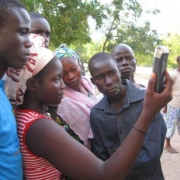The Role of ICTs in Humanitarian Crisis: Aid and International Development Forum 2011, Day One
 Leaders from businesses, governments, NGOs, and non-profits gathered today in Washington D.C. for the opening of the Aid and International Development Forum 2011. At the first workshop, Innovation in Information, speakers issued a universal call to the humanitarian sector: there is a need for technologies that are simple, usable, and pre-planned.
Leaders from businesses, governments, NGOs, and non-profits gathered today in Washington D.C. for the opening of the Aid and International Development Forum 2011. At the first workshop, Innovation in Information, speakers issued a universal call to the humanitarian sector: there is a need for technologies that are simple, usable, and pre-planned.
Adamant, unabashed, and bold, Joe Donahue, CEO of iMMAP, and Keith Robertory from the ICT department of the American Red Cross, both heavily criticized the technology industry for their counterproductive actions respecting humanitarian crisis. Robertory advised, “Treat technology like a black box. It doesn’t matter what goes on internally, but rather what goes in and what comes out.” Donahue went further, “I’m tired of flying in sexy technologies…what looks good in Washington doesn’t look good in the field.”
Their call for simple technologies that match the technological astuteness of its users was particularly relevant at this conference, where the aid industry was in full swing. Despite its backing by USAID, MCC, and the World Bank, the conference was primarily full of businesses, some more focused on selling their products than alleviating suffering and poverty.
Other presenters, however, reiterated that their focus was on helping people, not their bottom line. Alf Ellefsen, from the UN World Food Program, highlighted the use of three Internet connectivity technologies used by his agency during humanitarian crisis. One such technology, emergency.lu, includes the rapid deployment of satellite based Internet connections that can be delivered to natural disaster sites within 20 hours. The satellites are then set up around the disaster zone, effectively restoring communication between key humanitarian and government agencies in order to organize relief efforts.
Key to the conference was the theme of innovation and public-private partnerships. The diversity of organizations present at the conference demonstrated USAID’s commitment to global alliances across sectors in order to combat poverty.






































